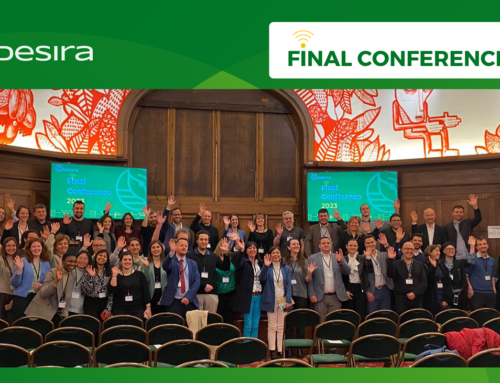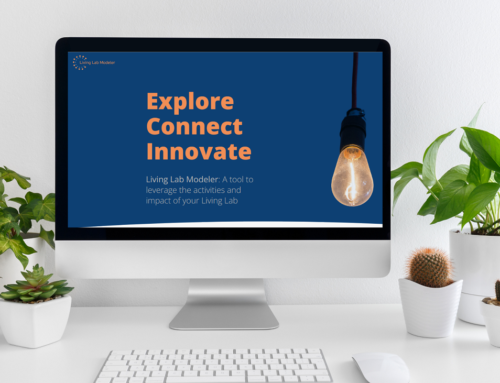
Authors: Giuseppe Saija and Gabriele Quattrocchi (EUKNOW), and Ana Maria Ventura (University of Lisbon)
The successful implementation of the European Green Deal will mark a historic achievement in the European Union economic, environmental and social development. It will affect the global economic trends in the decades to come.
These trends impact the agricultural and rural digitalisation processes and more in general all the stakeholders involved in the sector: land managers, civil society organisations as well as rural communities. Technology and service providers will especially contribute to develop new tools and related services that do not only ensure that land management operations are carried out efficiently, but also contribute to the compliance with the European and national rules on the environmental protection. New values, such as privacy safeguard and data ownership, are emerging and further shape the European data economy, technologies, products and management practices.
Digitalisation for sustainable soil management
The Horizon 2020 project SOILdarity has passionately been working on coordinating partners in supporting the dialogue with different types of stakeholders that represent research entities, the agricultural machinery industry, the data industry, land owners, managers and extension services. One of the objectives of SOILdarity is to provide a comprehensive view on the digitalisation perspectives in the European rural areas. The digitalisation is one of the processes that have the potential to enhance sustainable soil management, balancing the needs for human purposes with those for environmental conservation and functioning.
Soil health is currently growing weaker due to human-induced degradation processes, such as erosion, nutrient mining, compaction, acidification and pollution. As soils are a non-renewable resource – at least in a human timeframe, the role of scientific research and innovation, including digital technologies, is essential for ensuring sustainable soil management through deepening and promoting knowledge in different agricultural and environmental domains.
The EU legal framework is indeed evolving towards stricter measurements of land management activities, be it on types of treatments, number of treatments, emissions, etc. Almost every operation is becoming subject to monitoring and quantification against legally binding constraints. Digital technologies applied to land management in rural areas, such as precision agriculture techniques, provide a complex, distributed platform on which data are collected, stored, shared and analyzed in view of further adjustments to agricultural activities or in view of monitoring for policy making purposes.
Barriers emerging from SOILdarity’s consultation
Nonetheless, the wide uptake of digital technologies, even basic communication tools, by rural communities and land managers risks being hampered by several types of barriers. Ana Maria Ventura, researcher at the Faculty of Sciences of the University of Lisbon, has carried out, along with other fellow researchers, a stakeholder consultation in Portugal and Belgium within the framework of the project SOILdarity. Land managers, extension service providers, policy makers and land managers’ organisations were involved in an attempt to get a deeper knowledge about the opportunities and constraints related to the adoption of digital technologies, especially those under the umbrella of precision agriculture. The direct contact with the farmers and with different stakeholders has been taken as a primary source of qualitative information, which will be further treated. The consultation included farm visits which significantly contributed to reflections and further research on the social acceptance and impacts of precision agriculture in rural areas.
The consultation confirmed the benefits the technology and procedures underpinning precision agriculture provide, such as near-real time observations, measurements and interventions. Their application results in improved cost efficiency and product quality, more precise as well as diminished use of fertilizers (in case of crops), medicine (in case of animals), additives and other inputs. It helps the land managers address challenges such as: lack of employees, soil degeneration, food supply chain logistics, impact of climate change.

However, it looks apparent that precision agriculture has mostly been applied by large farms, while small farms are still considering available solutions. The main barriers for adopting such solutions by small land managers are: lack of capital to invest, lack of competencies to handle sophisticated software and technologies, and solutions not necessarily adapted to the scale of the farming business and to the specific local situation in terms of crop systems, livestock systems, geographical and climate conditions. As a result, the digitalisation processes are not homogenously distrusted and adopted in rural areas featuring different size, structure, and production systems. In addition, the agroforestry sector appears to be far from the use of any precision agriculture technology or facility.
“As for the service and technology providers, policy makers, associations and living labs, the opinions about digital technologies, notably precision agriculture, and about its usefulness are diverse”, Ventura points out. “For the conventional agriculture, in large farms, there is a consensus on the beneficial contribution precision agriculture can make for increasing productivity while reducing inputs, especially for the intensive and conventional farming. For small and medium farms, many doubts arise, due to the costs of the equipment and services, added value effectively delivered by digital technologies”.
Some reflections emerged from this consultation which needs to be further elaborated. “Rural development and sustainability aren’t clearly impacted by precision agriculture until now, in terms of new businesses, broad adoption, or know-how and skill acquisition”, Ana Ventura says. “Service providers and marketing strategies will play a decisive role in making this technology accessible to a broader share of farmers, even within the production systems that already show a convincing pathway in adoption. Then, in forestry and agroforestry, the use and interest in precision agriculture is very low or absent; here, the innovation is less related with PA and more with planning, legal support and decisions and financial incentives”.
Ana Ventura argues that “precision agriculture is mostly used in big farms with a high financial and operational capacity”, and that “it’s currently not possible to foresee whether small and medium farms will have a clear engagement with this technology, even with the eventual support of the current structure of service providers, whose interests are not necessarily aligned to those of the land managers”.
Future Prospects
More strategically, the European Union has been changing its legislation in the direction of more organic farming systems and practices. This is not necessarily at odds with the uptake of digitalisation in rural areas, but it represents a critical issue, as it reduces the potential for increased efficiency stemming from to the adoption of precision agriculture. In other words, in an organic supply chain, the scope of precision agriculture looks more limited than in conventional agriculture, due to significant reductions in the use of fertilisers, pesticides, number of treatments allowed, unless it will be possible to combine both.
From the land manager’s perspective, the economic barriers play also a critical role. The adoption of digital technologies and processes requires investment by the land manager. As investments may vary depending on the type of intervention planned, they certainly represent a decisive factor, and in many cases a barrier to the deployment of more advanced practices. This becomes more serious as the return on investments in some areas may be quite long, extended to several years before the adoption of a new mode of production is paid off. This effect is particularly severe on small farms, where scalability is not achieved in an optimal way.
But the return on investments is only a piece in a great puzzle, which also includes cultural values and data ownership rights. Accessibility to the digital infrastructure and the data governance will be fundamental issues that will influence the digital innovation uptake into land management practices. All the approaches should acknowledge the right of the land manager to benefit from and be compensated for the use of data produced during the operations. Data is however becoming a more complex issue, as the data that farmers may need or generate increase and the technologies for their management become more sophisticated. This results in real concerns of dependency from technology and of privacy protection connected to data sharing.
Living labs and networks of stakeholders have lately set themselves as focal points of the debate on the digitalisation processes in rural areas. Their influence on the land management practices and on engaging owners and managers with innovative practices has been acknowledged across Europe and globally. These new forms of governing transitions are considered as accelerators of innovation uptake. The living labs have currently extensive political support, including in the research and innovation policies promoted by the European Commission. The living lab approach is expected to perform support to a more socially accepted digitalisation processes in rural areas and reduce trade-offs. It should boost synergies between the economic, social and environmental dimensions of sustainability as well as to the fair distribution of costs, benefits and risks among all actors involved in the supply chains.
In a nutshell, the living lab can be a tool but also a process that challenge conventional land management practices and their environmental and social externalities. The concept calls for more sustainable place-based models in contrast with the dominant conventional agro-industrial system. The questions are whether, how and to which extent, the existing living lab models can actually move away from dominant conventional practices towards more sustainable systems and if it is inclusive. “The implementation and effective use of living lab facilities among farmers of all types must be assessed”, according to Ventura. Here, the co-creation process and the intervention of the various stakeholders (including from the academia) is assumed as pivotal for the success of the living labs. The Faculty of Sciences of the University of Lisbon, in close connection with some partners, is in the way to select what can be the basis for a prominent action in this field in the Alentejo region, in Portugal. It will contribute to turning into practice research results and discussions on important aspects of agriculture sector and of rural areas”.





